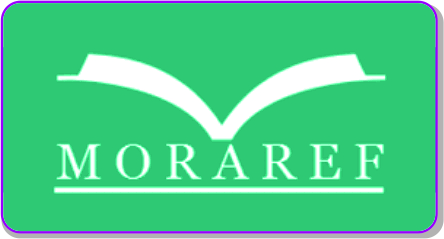The Role of Grammar in Learning-Teaching English: EFL Learners’ Belief
DOI:
https://doi.org/10.30983/mj.v4i1.8004Keywords:
Beliefs, Grammar, EnglishAbstract
ABSTRACT
This research aims to investigate the learners' beliefs dealing with the role of grammar in learning-teaching English at one State University in Jambi. The population of this study included English study program students at FKIP, Universitas Jambi, with the sample consisting of second-, third- and fourth-year students who have taken grammar courses. The questionnaire was used to get the quantitative data. To support the discussion of the findings obtained quantitatively, the interviews with 3 participants were conducted. Data of questionnaire were analyzed by Google Form Statistic and Excel Aplication. Meanwhile, qualitative data from interviews were analyzed with the help of the NVivo application. The data strongly indicate that EFL learners at the university where this research was conducted hold a shared belief in the crucial role of English grammar in their learning process. The specific emphasis is on writing skills, especially in academic and formal contexts. It provides valuable insights for language educators and policymakers in tailoring effective language education strategies for these learners.
ABSTRAK
Penelitian ini bertujuan untuk menyelidiki keyakinan peserta didik yang berhubungan dengan peran tata bahasa dalam belajar-mengajar bahasa Inggris di salah satu Universitas Negeri di Jambi. Populasi penelitian ini meliputi mahasiswa program studi bahasa Inggris di FKIP Universitas Jambi, dengan sampel terdiri dari mahasiswa tahun kedua, ketiga dan keempat yang telah mengambil mata kuliah tata bahasa. Kuesioner digunakan untuk mendapatkan data kuantitatif. Untuk mendukung pembahasan temuan yang diperoleh secara kuantitatif, dilakukan wawancara dengan 3 partisipan. Data kuesioner dianalisis dengan Google Form Statistic dan Excel Aplication. Sementara itu, data kualitatif hasil wawancara dianalisis dengan bantuan aplikasi NVivo. Data tersebut secara jelas menunjukkan bahwa pelajar EFL di universitas tempat penelitian ini dilakukan memiliki keyakinan bersama akan peran penting tata bahasa Inggris dalam proses pembelajaran mereka. Penekanan khusus adalah pada keterampilan menulis, terutama dalam konteks akademik dan formal. Ini memberikan wawasan berharga bagi pengajar bahasa dan pembuat kebijakan dalam menyesuaikan strategi pendidikan bahasa yang efektif untuk pelajar ini
References
Abrar, M., Mukminin, A., Habibi, A., Asrafi, F., & Makmur. (2018). “If our English isn’t a language, what is it?" Indonesian EFL student teachers’ challenges speaking English. Qualitative Report, 23(1), 129–145. https://www.scopus.com/inward/record.uri?partnerID=HzOxMe3b&scp=85040929393&origin=inward
Al-Khresheh, M. H., & Orak, S. D. (2021). The place of grammar instruction in the 21st century: Exploring global perspectives of English teachers towards the role of teaching grammar in EFL/ESL classrooms. World Journal of English Language, 11(1), 9–23. https://doi.org/10.5430/WJEL.V11N1P9
Alshammari, T., Alhadreti, O., & Mayhew, P. J. (2015). When to ask participants to think aloud: A comparative study of concurrent and retrospective think-aloud methods. International Journal of Human Computer Interaction (IJHCI), 6, 48. www.ueaticketbookings.co.uk
Becho, L. W. (2019). Using think-alouds to test the validity of survey questions. https://evalu-ate.org/blog/becho-feb19/
Blaxter, L., Hughes, C., & Tight, M. (2006). How to research. In Teaching Undergraduate Research in Religious Studies (3rd ed.). Open University Press. https://doi.org/10.1093/acprof:oso/9780199732869.003.0004
Borg, S. (1999). Studying teacher cognition in second language grammar teaching. System, 27(1), 19–31. https://doi.org/10.1016/S0346-251X(98)00047-5
Byram, M., Gribkova, B., Starkey, H., & Sheils, J. (2002). Developing the intercultural dimension in language teaching a practical introduction for teachers. Council of Europe.
Byrnes, H. (2012). Advanced language proficiency. In The Routledge handbook of second language acquisition (1st ed., pp. 506–521). Routledge.
Chomsky, N. (2006). Language and mind. Cambridge Universit Press.
Creswell, J. W. (2015). Educational research - planning, conducting, and evaluating quantitative and qualitative research (5th ed.). Pearson Education, Inc.
Dalil, Z. (2013). The importance of grammar in second language teaching [Universite Hassan II, Casablanca]. https://www.academia.edu/12284393/The_importance_of_grammar_in_second_language_teaching_and_learning
Dörnyei, Z. (1998). Ten commandments for motivating language learners: Results of an empirical study. Language Teaching Research, 2(3), 203–229. https://doi.org/10.1177/136216889800200303
Ellis, Robert. (2006). Grammar : An SLA Perspective. TESOL Quarterly, 40(1), 83–107.
Ellis, Rod. (2005). Principles of instructed language learning. System, 33(2), 209–224. https://doi.org/10.1016/j.system.2004.12.006
Ellis, Rod. (2008). Investigating grammatical difficulty in second language learning: Implications for second language acquisition research and language testing. International Journal of Applied Linguistics, 18(1), 4–22. https://doi.org/10.1111/j.1473-4192.2008.00184.x
Fazilatfar, A., Damavandi, R., Harsej, R., & Kia Heirati, J. (2014). Learners’ belief changes about language learning. International Journal of English Language Education, 3, 1. https://doi.org/10.5296/ijele.v3i1.6654
Gabillon, Z. (2020). L2 Learner ’ s beliefs : An overview. Journal of Language and Learning, 3(January 2014), 233–260.
Gottardo, A., Mirza, A., Koh, P. W., Ferreira, A., & Javier, C. (2018). Unpacking listening comprehension: the role of vocabulary, morphological awareness, and syntactic knowledge in reading comprehension. Reading and Writing, 31(8), 1741–1764. https://doi.org/10.1007/s11145-017-9736-2
Han, Y., & Ellis, R. (1998). Implicit knowledge, explicit knowledge and general language proficiency. Language Teaching Research, 2(1), 1–23. https://doi.org/10.1177/136216889800200102
Hans, A., & Hans, E. (2017). Role of grammar in communication-writing skills. International Journal of English Language, Literature, and Humanities, 5(1), 39–50. https://doi.org/10.24113/ijellh.v5.issue1.42
Ho, P. V. P., & Binh, N. T. (2014). The effects of communicative grammar teaching on students’ achievement of grammatical knowledge and oral production. English Language Teaching, 7(6), 74–86. https://doi.org/10.5539/elt.v7n6p74
Irwandi, I. (2020). Implementing Eclectic method for ELT through distance learning during the Covid-19 pandemic. Educatio: Jurnal Ilmu Pendidikan, 15(2), 31–43. https://doi.org/10.29408/edc.v15i2.2799
Knapp, P., & Watkins, M. (1994). Context, text, grammar : Teaching the genres and grammar of school writing in infants and primary classrooms (1st ed.). Text Productions.
Kumar, R. (2018). Research methodology a step-by-step guide for beginners (3rd ed.). SAGE Publication Inc.
Kumaravadivelu, B. (1994). The postmethod condition: (E)merging strategies for second/foreign language teaching. TESOL Quarterly, 28(1), 27–48. https://doi.org/10.2307/3587197
Larsen-Freeman, D. (2014). Teaching Grammar. In M. Celce-Murcia, D. M. Brinton, & M. A. Snow (Eds.), Teaching English as a second of foreign language (4th ed., pp. 256–270). National Geographic Learning.
Loghman Ansarian, T. M. L. (2008). Problem-based Language Learning and Teaching.
Lopez, A, L. (2008). To what extent does grammar knowledge account for competence in Fl reading comprehension. Resla, 21, 181–200.
Lyster, R. (2007). Learning and teaching languages through content: A counterbalanced approach. Teaching English as a Second or Foreign Language, 12(3), 1–4.
Matiso, N. H. (2023). A comprehensive approach to eliminate English second language learners’ grammatical difficulties. International Journal of Learning, Teaching and Educational Research, 22(10), 306–323. https://doi.org/10.26803/ijlter.22.10.17
Mecartty, F. . (2000). Lexical and grammatical skills. Applied Language Learning, 11(2), 323–248.
Melo, S. (2018). Advantages and disadvantages of google forms. https://datascope.io/en/blog/advantages-and-disadvantages-of-google-forms/
Miao, Z. (2023). Effectiveness of Audio-Lingual Method and Communicative Language Teaching in enhancing the English language grammar proficiency and attitude among intermediate Chinese EFL learners. World Journal of Educational Research, 10(5), p58. https://doi.org/10.22158/wjer.v10n5p58
Mocorro, R. E. (2017). Pilot study, the first step in research. International Journal of Science and Research (IJSR), 6(12), 2016–2018. https://doi.org/10.21275/ART20178777
Murphy, J. M. (1991). Integrating speaking, listening, and pronunciation. TESOL Quarterly, 25(1), 51–75.
Nassaji, F., & Fotos, S. (2010). Teaching grammar in second language classrooms: integrating form-focused instruction in communicative context. In Studies in Second Language Learning and Teaching (Vol. 1, Issue 3, pp. 1–5). Routledge.
Perfetti, C., & McCuthen, D. (1986). Schooled language competence: linguistic abilities in reading and writing. Cambridge University Press.
Radford, A. (1999). Syntactic theory and the structure of English. cambridge.org.
Rahuma, F. (2016). A study into teaching English grammar with reference to Tripoli University [Liverpool John Moores University]. http://researchonline.ljmu.ac.uk/id/eprint/4795/1/Fadwa Rahuma PhD 2016.pdf
Reed, M., & Michaud, C. (2011). An integrated approach to pronunciation: Listening comprehension and intelligibility in theory and practice. Proceedings of the 2nd Pronunciation in Second Language Learning and Teaching Conference, 95–104.
Roehr, K. (2004). Exploring the role of explicit knowledge in adult second language learning: Language proficiency, pedagogical grammar and language learning strategies. CRILE Working Papers, 59(59), 1–22.
Rossiter, A. (2020). A descriptive grammar of English (1st ed.). Linguapress.
Sauro, J., & Lewis, J. R. (2011). When designing usability questionnaires , does it hurt to be positive ? Proceedings of the SIGCHI Conference on Human Factors in Computing Systems, 1–9.
Schulz, R. A. (1996). Focus on form in the foreign language classroom: Students’ and teachers’ views on error correction and the role of grammar. Foreign Language Annals, 29(3), 343–364. https://doi.org/10.1111/j.1944-9720.1996.tb01247.x
Schulz, R. A. (2001). Cultural differences in student and teacher perceptions concerning the role of grammar instruction and corrective feedback: USA-Colombia. Modern Language Journal, 85(2), 244–258. https://doi.org/10.1111/0026-7902.00107
Smith, K., & Kirby, S. (2008). Cultural evolution: Implications for understanding the human language faculty and its evolution. Philosophical Transactions of the Royal Society B: Biological Sciences, 363(1509), 3591–3603. https://doi.org/10.1098/rstb.2008.0145
Traxler, M. J. (2012). Introduction to psycholinguistics: understanding language science (1st ed.). A John Wiley & Sons, Ltd. https://doi.org/10.1016/j.imlet.2014.08.006
Ur, P. (2012). A course in English language teaching. Cambridge University Press.
Yule, G. (2017). The study of language (6th ed.). Cambridge University Press.
Downloads
Submitted
Accepted
Published
Issue
Section
License
Copyright (c) 2024 Nely - Arif

This work is licensed under a Creative Commons Attribution-ShareAlike 4.0 International License.
Authors who publish with this journal agree to the following terms:
- Authors retain copyright and grant the journal right of first publication with the work simultaneously licensed under a Creative Commons Attribution License that allows others to share the work with an acknowledgment of the work's authorship and initial publication in this journal.
- Authors are able to enter into separate, additional contractual arrangements for the non-exclusive distribution of the journal's published version of the work (e.g., post it to an institutional repository or publish it in a book), with an acknowledgment of its initial publication in this journal.
- Authors are permitted and encouraged to post their work online (e.g., in institutional repositories or on their website) prior to and during the submission process, as it can lead to productive exchanges, as well as earlier and greater citation of published work (See The Effect of Open Access).









